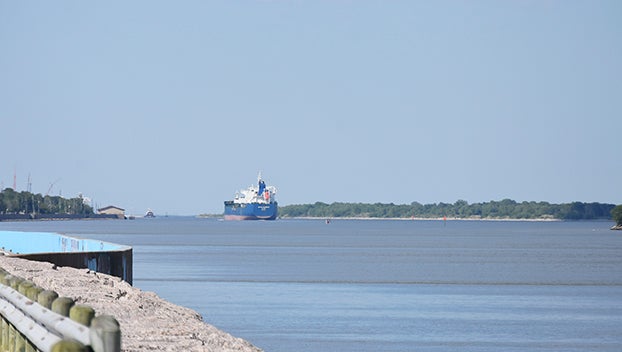MOORE OUTDOORS: Remember the forgotten sea
Published 1:04 am Sunday, June 11, 2017
The water was perfectly calm.
Occasionally, a light breeze would stir up a ripple but there was no wave action to speak of and the waters were unusually clear.
As we pulled up to a weedline that had built up on a current rip, I was astounded at its size.
The sargassum (most just call it seaweed) covered a strip about 25 yards deep for several miles and it was teeming with life.
Curiosity got the best of me and I took a dipnet to pull up a handful. Amongst the pieces was a little crab that looked exactly like the habitat it was living in. It was a sargassum crab one of nature’s masters of camouflage.
We were hoping to catch dorado (mani mani) that day and cruised the weedline scanning for any signs of the beautiful fish.
As our momentum slowed down to a crawl, I noticed movement beneath the weeds and found myself eye to eye with an eight foot long bull shark. I was in the boat so it wasn’t as if I was in any danger so my reaction was one of wonder and astoundment.
That day, many years ago, was the first time conditions were right for me to take in so much of its beauty.
I have since then through the lens of a scuba mask peered at its majesty, explored its barrier islands, watched giant schools of redfish feed at the surface and seen many beautiful sights within its borders but on that day the real Gulf of Mexico was revealed to me.
One can get a pretty good look at the Pacific, Atlantic, Carribbean and even the Arctic and Indian Oceans through television programs and a variety of media coverage but little is spoken about the Gulf.
Other than the tragic Deepwater Horizon oil spill and its aftermath when is the last time you saw anything about the Gulf at a national level?
If you saw one program, it was more than I have seen and I seek out this kind of programming on a regular basis.
The Gulf of Mexico is the place where the redfish and flounder we pursue spawn in the fall and winter.
It is the home of red snapper, dorado, king mackerel, amberjack, grouper and so many other offshore fish that thrill anglers.
It is home to the gorgeous Flower Gardens Banks National Marine Sanctuary, the world’s northernmost coral reef.
It is home to Atlantic bottlenose dolphins, pilot whales, sperm whales and dozens of other marine mammal species.
It is a place of life and life abundant.
We who live along its coast need to be appreciative of its beauty and the recreational opportunities it gives us.
Do you like to eat shrimp, crabs or oyster? If you do then you owe it to the Gulf of Mexico and its tributaries.
We need to support measures that aid clean water and innovations that can ensure a more sustainable future for our aquatic resources.
Clean water and abundant wildlife are not a “green” issue or a liberal or conservative one. Those are issues that all humans should agree on and strive toward as we learn from mistakes of the past.
We should remember the Gulf of Mexico and keep it in mind as we support policy that dictates how it will be used and what will be conserved.
From the red snapper issue to the illegal dumping of hazardous waste there are many things on the political and economic agenda that are impacting the Gulf right now.
We should stop letting this incredible body of water be a forgotten sea and raise awareness to the things that will help us secure a bright future for the entire Gulf region.
Everyone should be able to have the chances I have had to explore the Gulf, catch and eat its fish and enjoy all it has to offer, but we should always remember to not only take but give back.
A lot has been taken from our Gulf. Now it’s time to find creative and impactful ways not only for its waters and resident but future generations who will set sail on its waters.
•
To contact Chester Moore, email him at chester@kingdomzoo.com. You can hear him on “Moore Outdoors” Fridays from 6-7 p.m. on Newstalk AM 560 KLVI or online at www.klvi.com.





